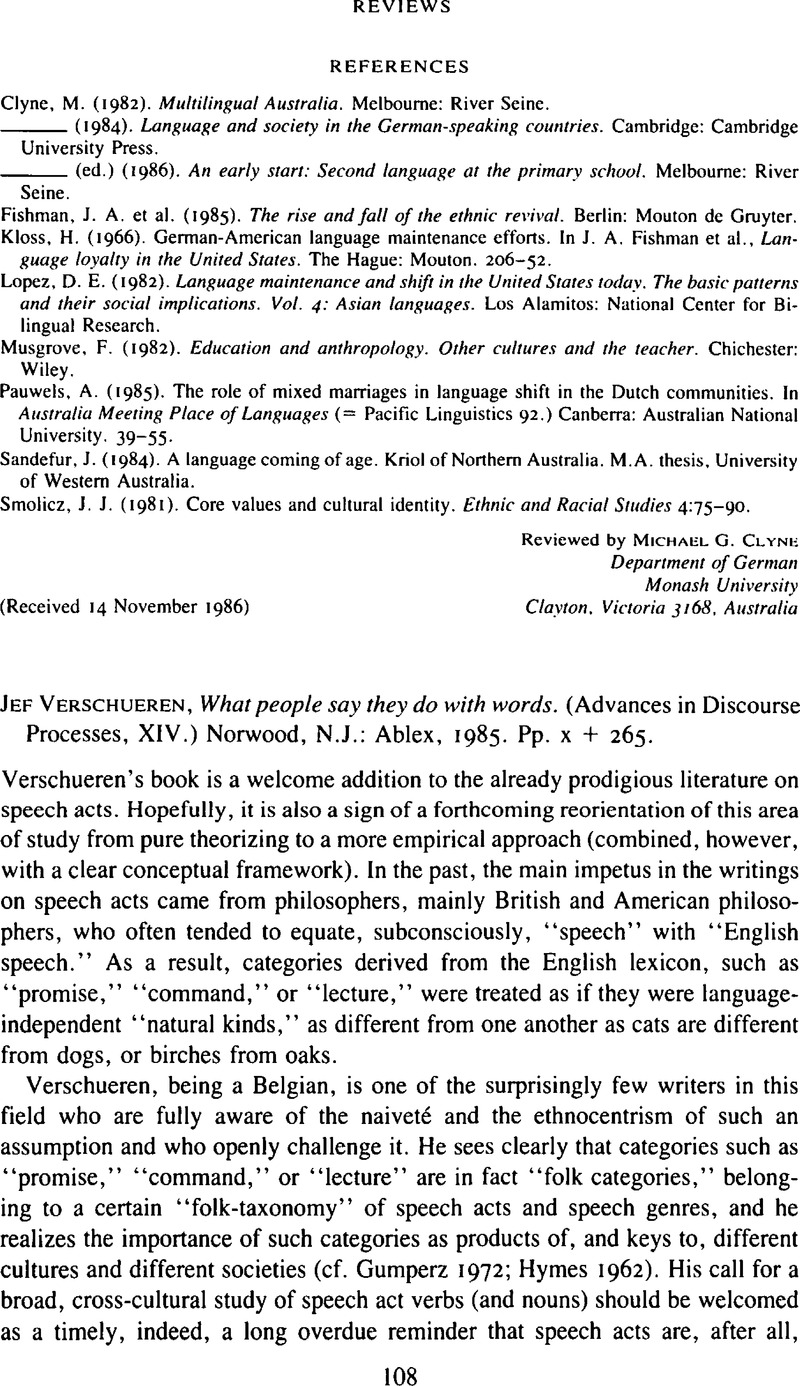Wierzbicka, A. (in press). Two Russian speech act verbs: Lexicography as a key to conceptual and cultural analysis. In
Stolz, B. (ed.),
Selected papers from the III World Congress of Soviet and East European Studies.
Linguistics volume.
Google Scholar 